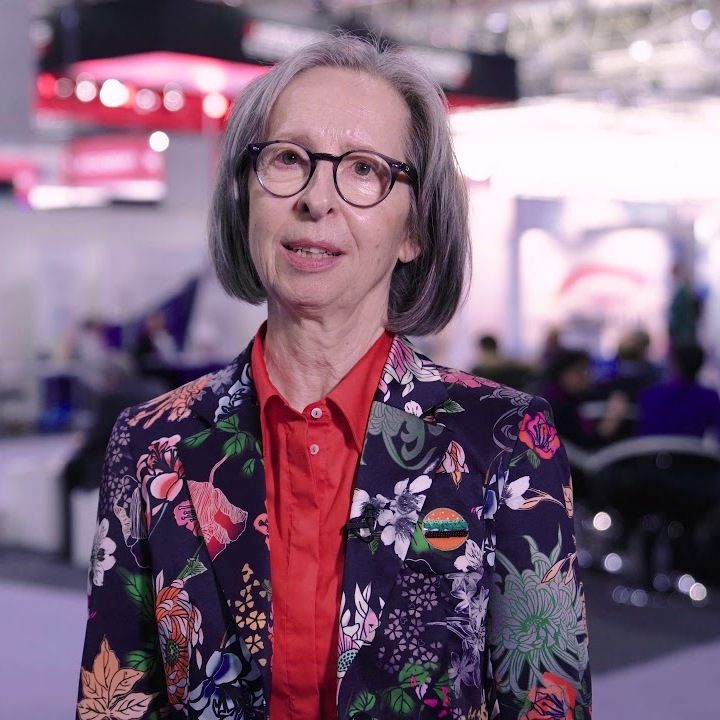Continuous Treatment with Anti-VEGFs Important for Patients with PDR
Improvements in neovascularization and best-correct visual acuity were generally not sustained following treatment discontinuance.
Gabriele Lang, MD

Second year follow-up of the PRIDE study revealed that discontinuing ranibizumab may lead to increases in neovascularization (NV) and loss of visual acuity in patients with proliferative diabetic retinopathy.
Originally, the phase 2, randomized, open-label study found that the anti-VEGF was significantly more effective than panretinal laser photocoagulation (PRP) in reducing area of NV within 1 year. Ranibizumab monotherapy was also linked to improved outcomes in best-corrected visual acuity (BCVA) and central subfield thickness (CST).
Nonetheless, the investigative team, led by Gabriele Lang, MD, University of Ulm in Germany, continued to follow and observe patients through month 24. Patients were treated at the discretion of the investigators during this observational phase. No study medication was administered.
The PRIDE Study: Follow-Up Results
As many as 25 of 35 ranibizumab monotherapy patients completed the follow-up phase, as well as 19 of 35 in the PRP cohort and 23 of 36 in the combination therapy cohort.
Patients were then assessed at both months 18 and 24. During this time, only 2 patients in the ranibizumab group received anti-VEGF treatment while 17 patients received PRP laser therapy.
“In the observational follow-up phase, mean (± SD) NV area in the ranibizumab follow-up group increased from 3.16 ± 4.30 mm2 at Month 12 to 6.09 ± 10.79 mm2 at Month 18 and 10.00 ± 17.63 mm2 at Month 24,” Lang and colleagues reported.
“In the PRP follow-up group, NV area declined from 5.44 ± 14.55 mm2 at Month 12 to 1.22 ± 1.67 mm2 at Month 18, but increased again to 4.05 ± 11.66 mm2 at Month 24. In the combination follow-up group, NV area increased from 1.13 ± 2.78 mm2 at Month 12 to 2.14 ± 4.41 mm2 at Month 18 and 3.26 ± 7.05 mm2 at Month 24,” they continued.”
They also noted that—at month 12—25.9% of patients in ranibizumab monotherapy group developed new neovascularization elsewhere, as did 25.0% and 24.0% in the PRP and combination groups, respectively. However, at month 24, new neovascularization elsewhere occurred in 40.0%, 42.1%, and 54.5%, respectively.
The investigators saw declines and increases in BCVA in the 3 cohort at months 12, 18, and 24. Particularly for ranibizumab monotherapy patients, improvements in BCVA and CST achieved at Month 12 were not sustained during the follow-up period.
“In the PRP follow-up group, CST and BCVA slightly improved in the second year compared to Month 12, again possibly indicating a delayed effect of PRP treatment,” the investigators wrote.
They observed no Anti-Platelet Trialists´ Collaboration (APTC) events in any of the treatment groups over the course of the study. However, 1 patient in the ranibizumab follow-up group, 2 in the PRP group, and 4 in the combination group experienced ≥1 serious adverse event.
No patients in the ranibizumab and PRP groups underwent a vitrectomy.
“In conclusion, our data from the observational second year 12-month follow-up of the PRIDE study indicate that PDR patients require regular monitoring of disease activity,” Lang and team wrote. “For patients receiving anti-VEGF therapy, continuous treatment is important to ensure that the benefits are not lost due to recurrent NV activity.”
The study, “Observational outcomes in proliferative diabetic retinopathy patients following treatment with ranibizumab, panretinal laser photocoagulation or combination therapy – The non-interventional second year follow-up to the PRIDE study,” was published online in Acta Ophthalmologica.